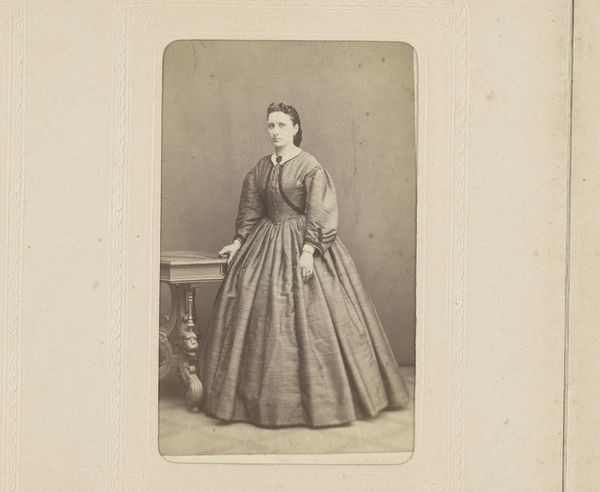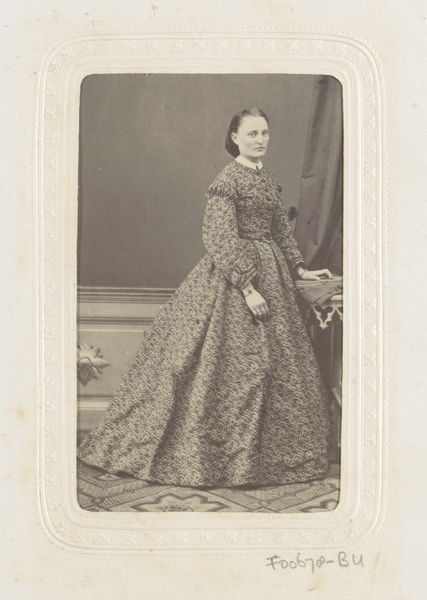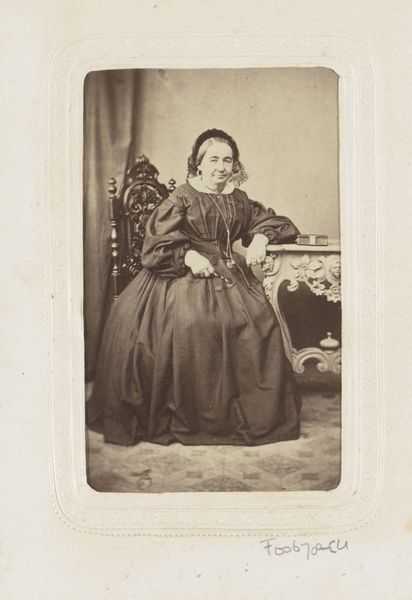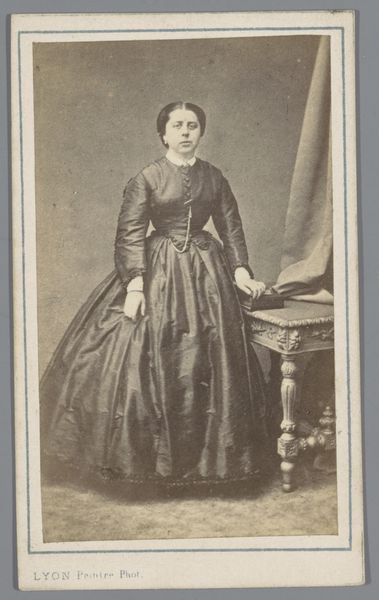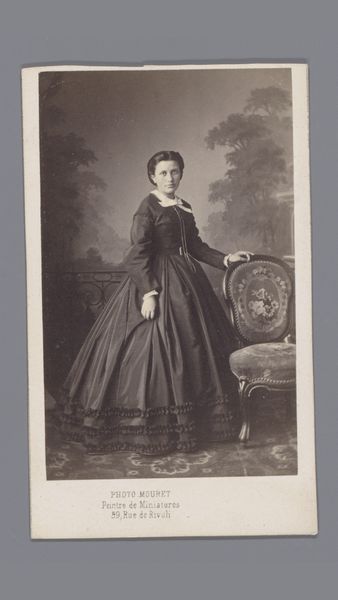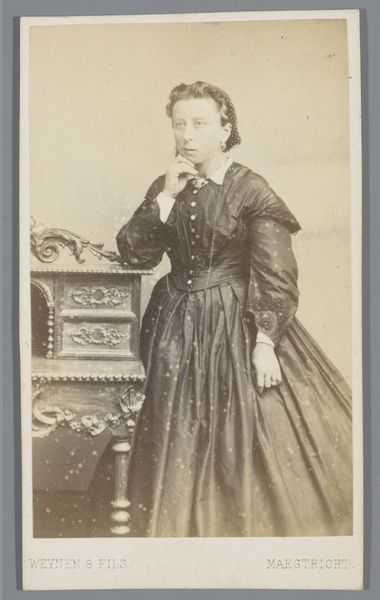
photography, albumen-print
#
portrait
#
figuration
#
photography
#
historical photography
#
19th century
#
albumen-print
Dimensions: height 87 mm, width 53 mm
Copyright: Rijks Museum: Open Domain
This portrait by Franz Neumayer captures a standing woman adorned in the fashion of her time. Her hand rests gracefully on a chair, a pose that speaks to decorum and social position. The chair itself is a motif laden with symbolism. From ancient thrones to ecclesiastical seats, the chair denotes authority and status. We see echoes of this symbolism in countless portraits throughout history, where rulers and dignitaries are depicted seated to convey power and legitimacy. But the chair also invites contemplation on the transience of power. Consider the empty throne in representations of the interregnum, a potent symbol of disrupted order and uncertainty. The chair, therefore, is not merely a prop but a complex signifier, imbued with layers of historical and psychological meaning. It embodies both the aspiration to power and the inevitable awareness of its fleeting nature. Its presence here engages us with a deep, subconscious understanding of social hierarchies and the human condition. Symbols such as the chair thus progress non-linearly, resurfacing and evolving to take on new meanings in differing historical contexts.
Comments
No comments
Be the first to comment and join the conversation on the ultimate creative platform.




